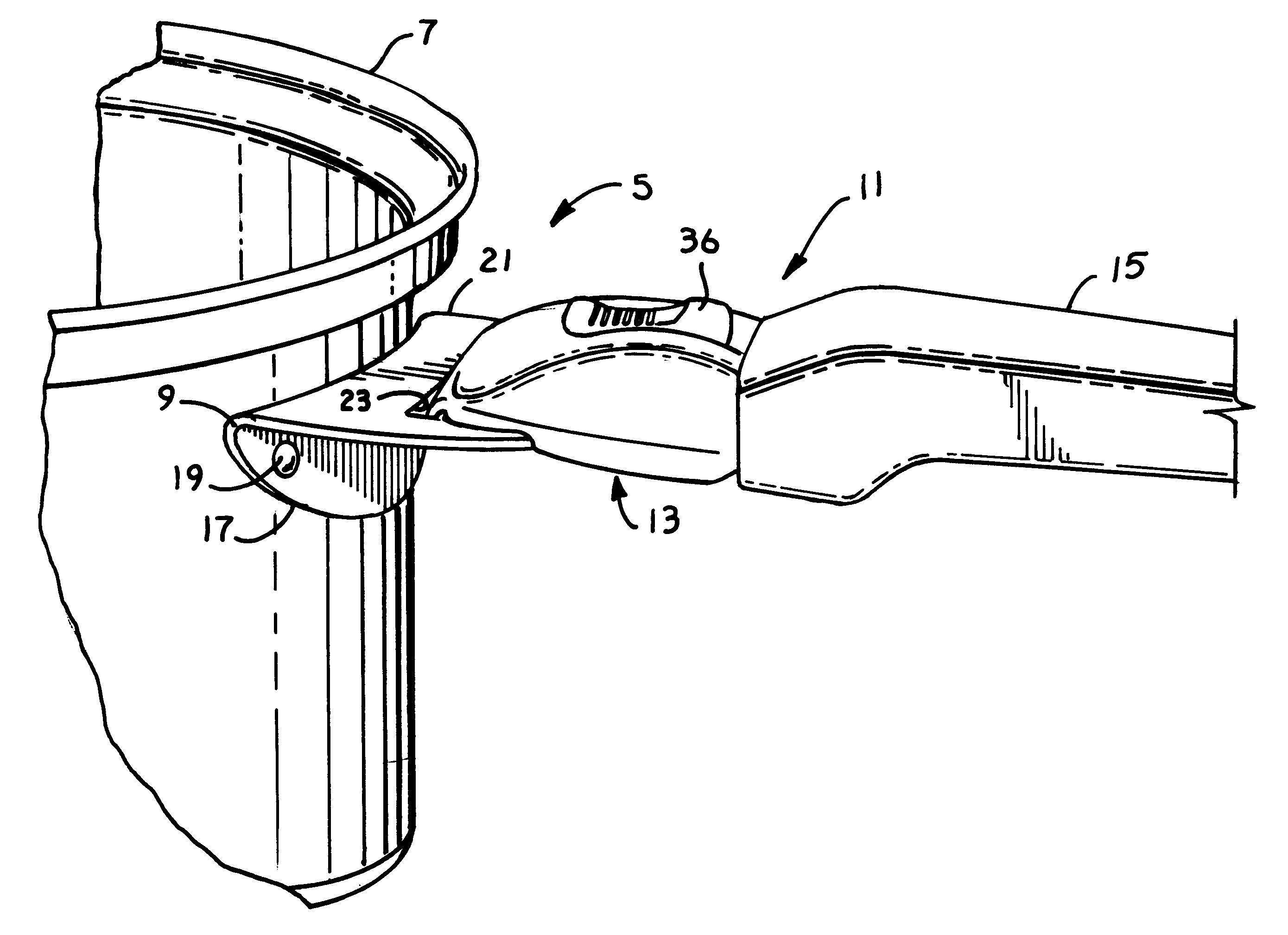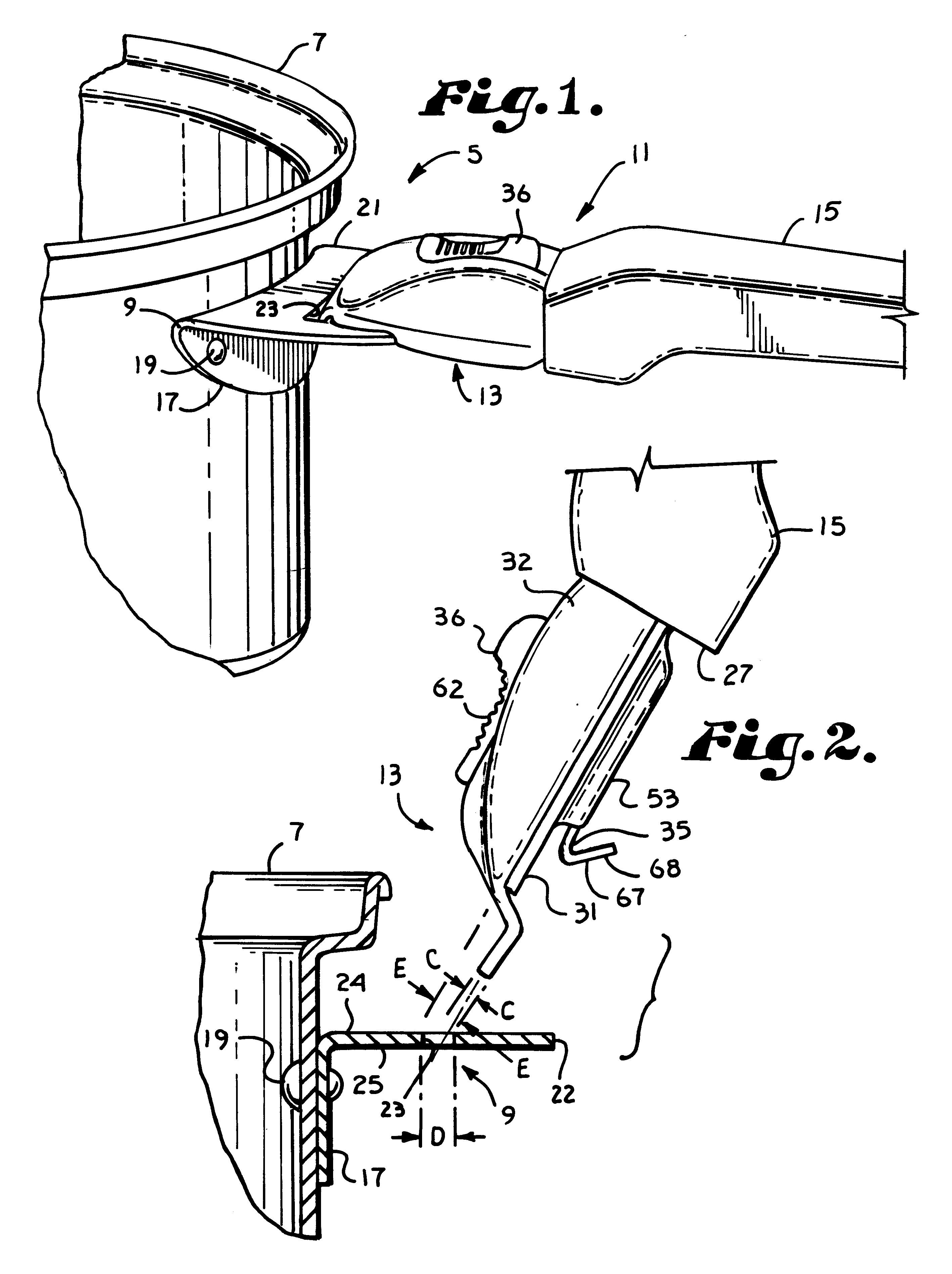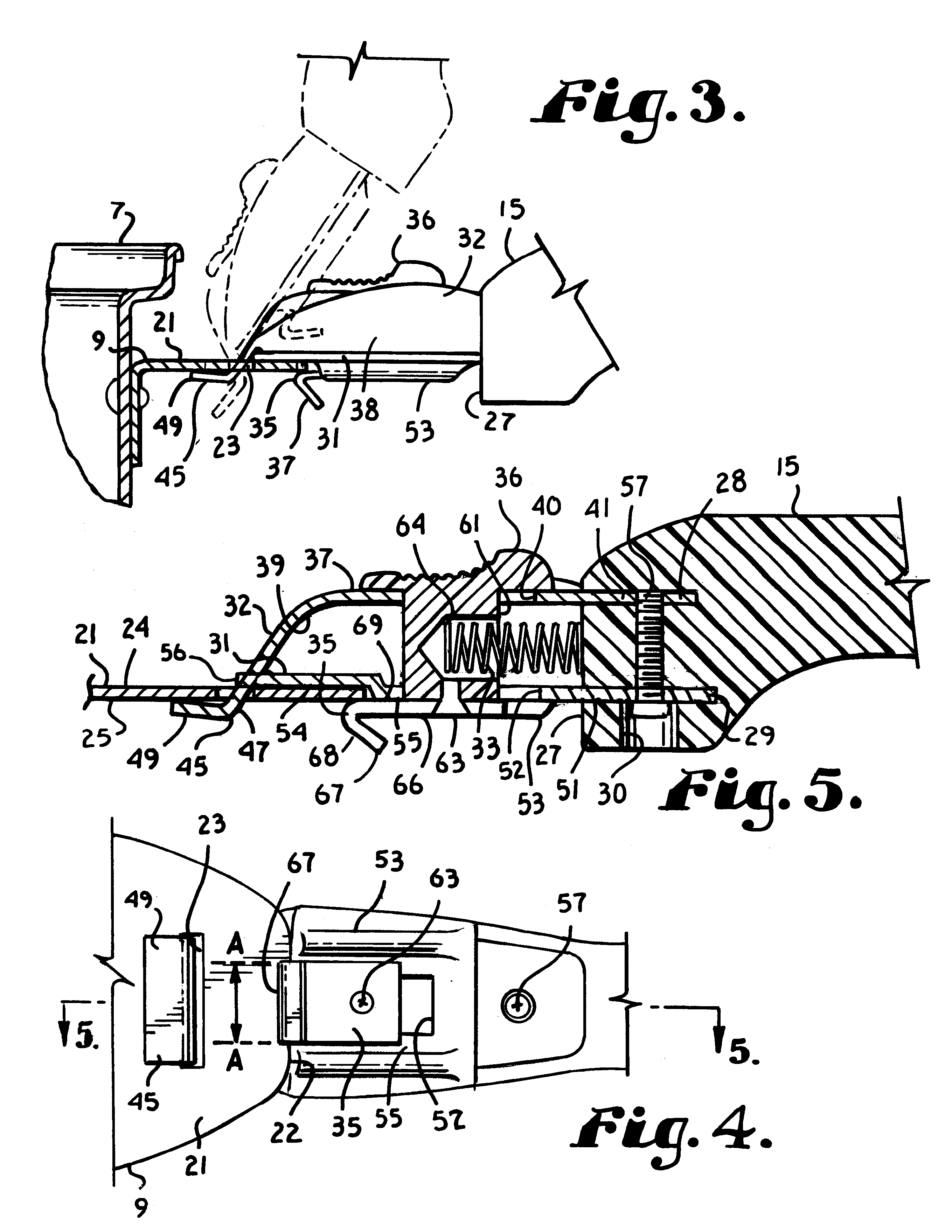Detachable handle for vessels
a technology for detachable handles and vessels, which is applied in the direction of containers preventing decay, sealing, transportation and packaging, etc., can solve the problems of difficult and expensive, difficult and expensive, and the attachment mechanism of detachable handles is rather complicated, so as to achieve easy and inexpensive manufacturing, simple structure, and easy to fabricate
- Summary
- Abstract
- Description
- Claims
- Application Information
AI Technical Summary
Benefits of technology
Problems solved by technology
Method used
Image
Examples
Embodiment Construction
The following convention is used in this detailed description. The words "upper," "top," "above," and words of like import refer to that direction in the properly oriented, upright drawings. The words "down," bottom," "lower," "below," and words of like import refer to that direction in the properly oriented, upright drawings. The words "front," "forward," and words of like import refer to the left hand direction in the properly oriented, upright drawings, and the words "rear," "rearward," and "back" refer to the right hand direction in the properly oriented, upright drawings.
Referring to the drawings in more detail, the reference numeral 5 refers to a detachable handle mount assembly of the present invention shown secured to a vessel 7. The vessel 7 may be a pot, pan, or other common container or utensil used to hold or cook food or other substances. The handle mount assembly 5 comprises a mount 9 attached to the vessel 7 and a handle assembly 11. The handle assembly 11 comprises a...
PUM
 Login to View More
Login to View More Abstract
Description
Claims
Application Information
 Login to View More
Login to View More - R&D
- Intellectual Property
- Life Sciences
- Materials
- Tech Scout
- Unparalleled Data Quality
- Higher Quality Content
- 60% Fewer Hallucinations
Browse by: Latest US Patents, China's latest patents, Technical Efficacy Thesaurus, Application Domain, Technology Topic, Popular Technical Reports.
© 2025 PatSnap. All rights reserved.Legal|Privacy policy|Modern Slavery Act Transparency Statement|Sitemap|About US| Contact US: help@patsnap.com



